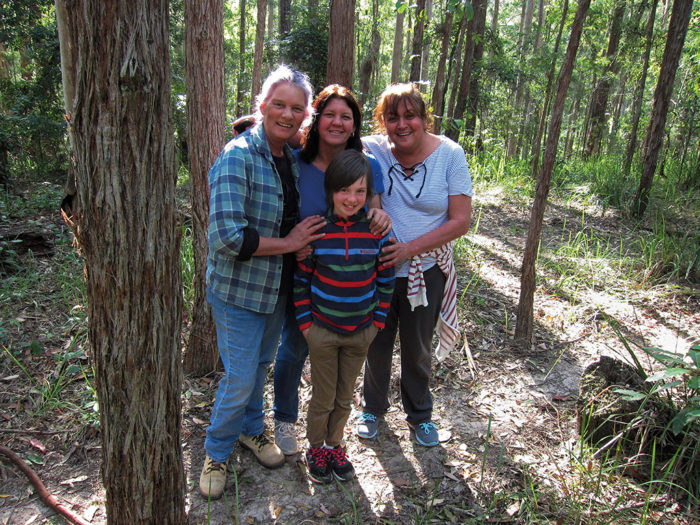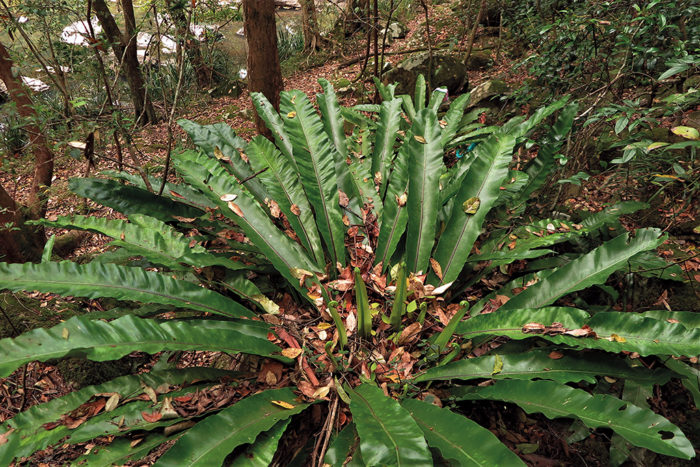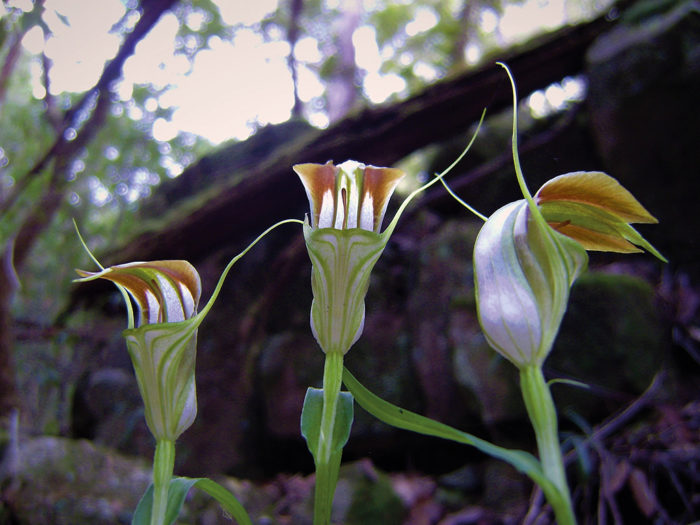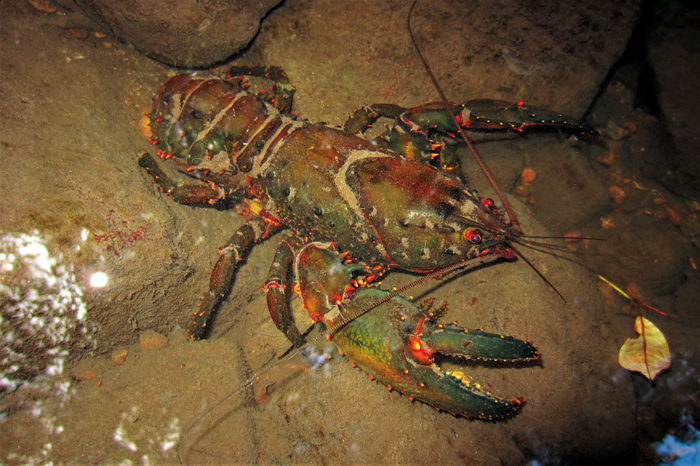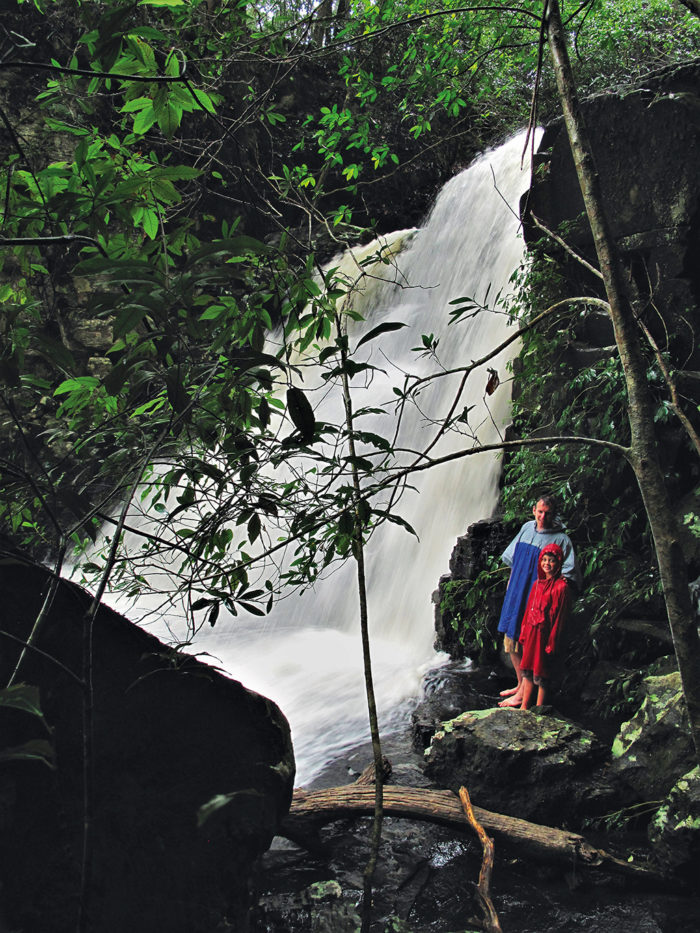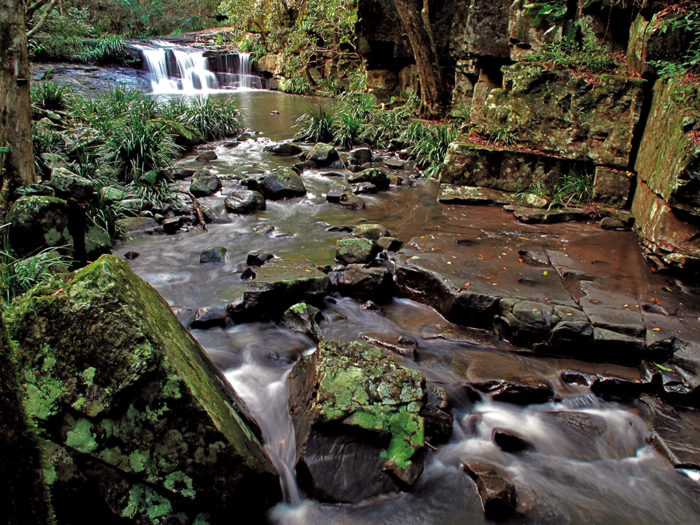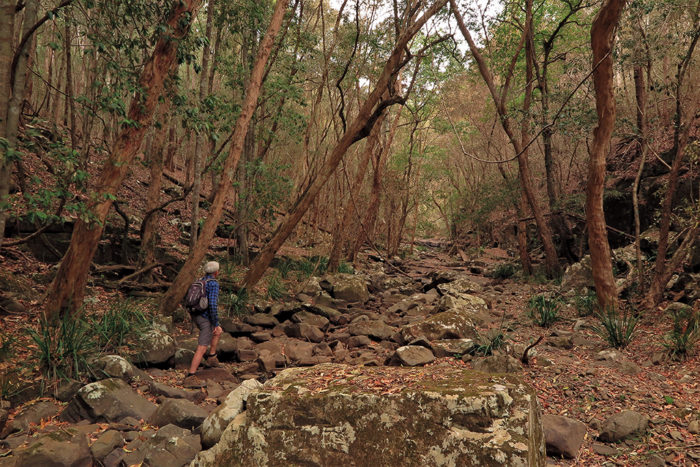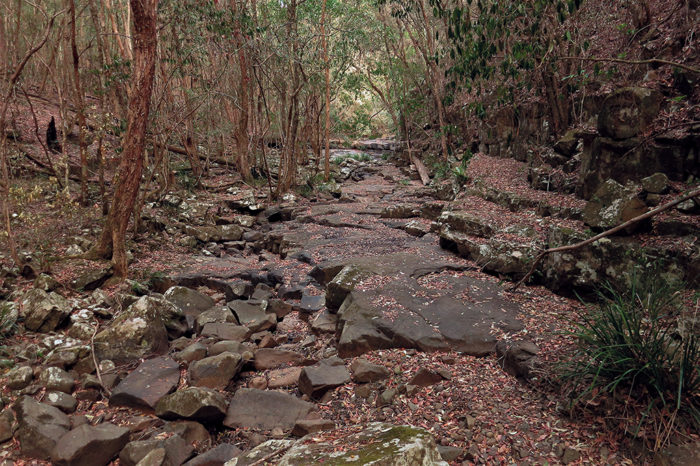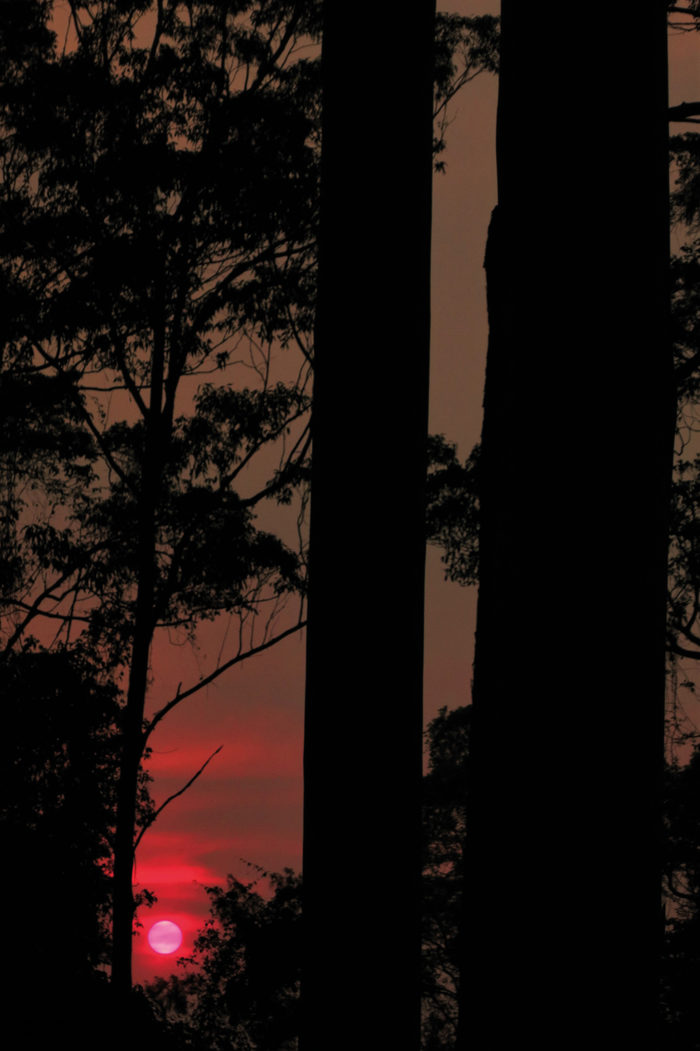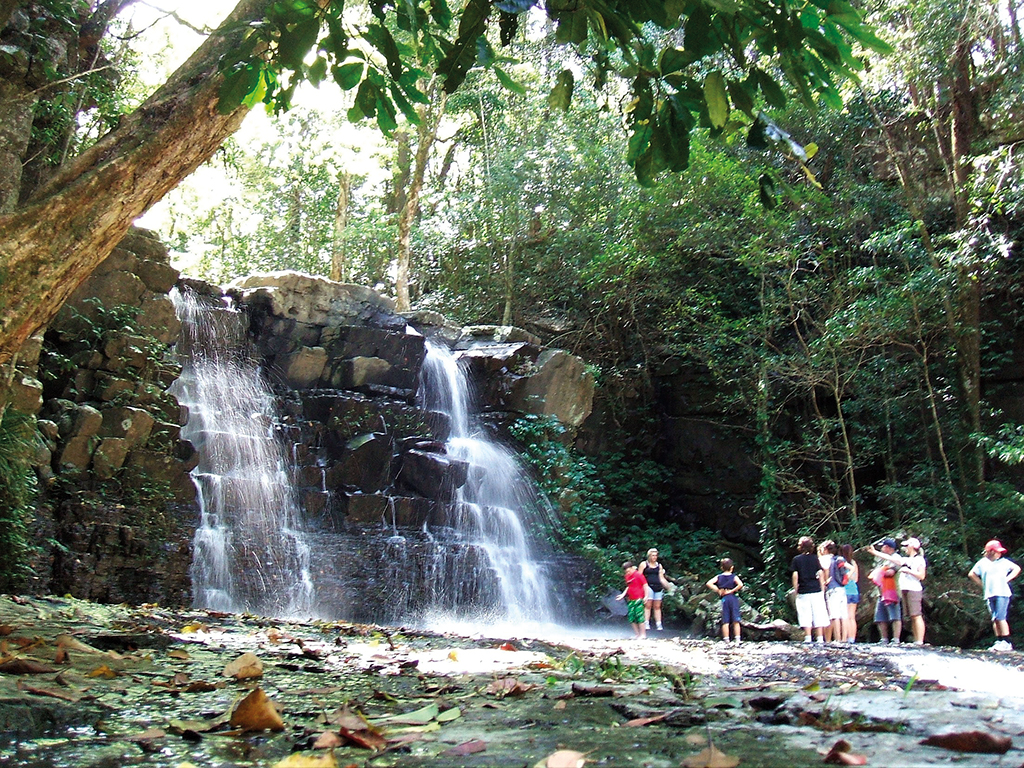
When the forest streams run dry…
Author and photographer Ken Rubeli has lived near Jerusalem Creek for decades and hasoften visited it with daughter Freya. But he has never before seen it like this.
On the earliest maps of the steeper country in the upper Williams Valley this tributary was marked as ‘Deep or Mundhuk Creek’. But subsequent maps discarded those names: around 1900 it became Jerusalem Creek. It coursed and tumbled out of rugged, high-rainfall country where intrepid timber-cutters felled cedar trees with axes and cross-cut saws and with bullock teams hauling out the logs.
Today along its whole course Jerusalem Creek flows through what can fairly be called a wilderness. I’ve lived within coo-ee of this idyllic stream for thirty years; but for thousands of years this has been the country of the Gringai people. This drought of the summer of 2019/’20: what stories would Gringai elders share to make sense of deprivation like this? I found the word mundhuk in a small dictionary, since lost; a scant listing of Aboriginal words compiled before there was wide understanding that there were hundreds of languages. Its meaning was recorded as “spirit or goddess of fertility”.
Does that meaning apply here, to this creek? I can only say: walk this wild place and feel its atmosphere for yourself. I can find no indigenous thread in my ancestry but I can’t seem to live without the embrace of the bush. I have explored this creek from its trickling headwaters accessed from Wangat Trig Road north of Dungog, down through cascades and groves of coachwood trees, to what is now a notable attraction within Barrington Tops National Park, Jerusalem Creek Falls.
From there this perennial stream in many places flows over sheet rock, sometimes wide as a highway, and over more waterfalls, for seven or eight kilometres to its junction with the Chichester River not far below where the main feature today is the Chichester Dam. ‘Mundhuk’ makes sense as something a cartographer might propose as a reasonable name for a ‘new’ creek: surveyors and map-makers at the time gleaned numerous Aboriginal names to apply to features of the landscape, and to settled localities. But ‘Deep’? Jerusalem Creek along its whole length has no place at all where the bottom isn’t within easy reach of a swimmer’s feet; except for one pool.
Yes it’s only 30 years, but for me this stream has always flowed, sometimes in mighty floods, sometimes just a dribble, but always pure clear water and almost always a lushness of vegetation along the river margins. There were ferocious summers where in the shallow soil over the sheet rock the grey myrtle trees would shed leaves to carpet the creek bed until the next thunderstorm swept them all away.
Connection to country
Two years ago I made contact with Sharon Edgar-Jones and invited her to one day come and visit Jerusalem Creek. Her family history is in the Singleton area and the ranges to the east. In her forties Sharon began a serious interest in the language of her forebears, along with other indigenous languages and dialects of the Hunter and Port Stephens regions.
Her great-great grandmother was a Gringai woman, Sarah Madoo, born on the Allyn River in the 1840s. Another great-great grandmother was from the Williams Valley. A day’s walk from the Allyn, over into the Williams Valley, then over another ridge to the Chichester River, and from there, if you were allowed, there was the steep-sided rainforest-lined creek where stories I’ve heard suggest only women were permitted. In August 2018 Sharon came to Jerusalem Creek with her two cousins Georgina Berry and Tracey Skene. Back then the creek was flowing generously.
For my daughter Freya, aged eleven, this was a creek she had known from birth. In that one deep pool she, a week old, was ceremonially dunked. As soon as she could walk she walked there. Before she was ten I would be ‘leading’ a group of visitors but Freya would be out at the front with a string of other kids, showing the way. It was like it was her place.
But now she was with three proud Gringai women who had grown up knowing this was their country. Sarah Madoo would surely have been to this creek; but for Sharon and Georgina and Tracey this was their first time. Our route crossed the Chichester River. Sharon paused by a pool there and spoke to the water in her language. Imagine that! Imagine those words coming back to a land where its people had long ago been swept away. We climbed to a cleared ridge and then on the other side descended steeply through moist forest to the creek. Down here there are yabbies and eels in the pools, there are water dragons and coppery skinks and the occasional diamond python.
There’s a feeling here that for all these years of European settlement, along this watercourse nothing much has changed. We walked awhile, water gums along the banks, bold rock cliffs, old trees fallen into the stream; moss and ferns and lichen and even delicate greenhood orchids. It rains so much here the spaces are crowded with verdancy. There are crow’s nest ferns and elkhorns and tiny trunk-clinging epiphytic orchids. It is the luxuriance of a rainforest world. With Sharon and her cousins we set forth on a kind of pilgrimage. From the pristine creek we filled our water bottles. And then I stayed behind. Three women, and one small girl, disappeared around a bend in the stream.
Women’s business
With their young guide they were drawn up between steep banks to the one deep pool. They were gone for more than an hour. Women’s business. When they returned, what had transpired the women didn’t say. And nor did my daughter. The secrets of Mundhuk, spirit or goddess of fertility. By the bubbling waters Sharon bestowed on my daughter a name: Duumulgal mitji. Little keeper.
This summer that one deep pool was a blackwater puddle. The stream dwindled and stopped. This summer this world had a grim new character: desiccation. Familiar scenes of water meandering and spilling over ancient rounded rocks were repainted parched. And all eerily quiet.
The story was the same all over the Hunter region. The soil dried out, not just at the surface but deep down. With the last good rains in March, by December the vista had changed: a rich green world had turned brown. All this life, including mine, so reliant on the generosity of nature, its infallibility, and now drought and all this suffering…. Yet while all surface flow had ceased, in places there was a miniscule bleed of water from slim passages within the rock strata.
The rock formed from powdery mineral blasted out of a volcano three hundred million years ago when all this land was under a lake or a shallow sea. The dust packed down in layers, eruption after eruption, and under extreme pressure became the hardest of stone.
This history is clearly visible in the vertical face of Jerusalem Creek Falls this summer with the water veil removed and the building blocks all nakedly exposed. All those little weeps from between the layers – 20 steps downstream they are swallowed back, perhaps a shallow, fast evaporating pool behind them, and then the creek bed is again bone dry. It’s like the faltering breath of someone dying. Somewhere underneath us wherever we are there is water.
People have been here for many thousands of years; the water has been there for millions. This wondrous modern civilisation of ours has radiated its inventiveness for just a couple of centuries. Now we swarm all over this planet, we fill our valley with our habitations and we reshape the nature around us. Bushfires rage and we dream we might have the power to control the world we have made.
Man and child
In the evening below Jerusalem Creek Falls I walk barefoot with my daughter, smoke haze visible in the air we breathe, and the sun a red ball through the eucalypts. I hold her hand.
At the time of going to print, Jerusalem Creek was flowing once again.
Read more great stories in the Autumn issue of Hunter&Coastal Lifestyle Magazine.

